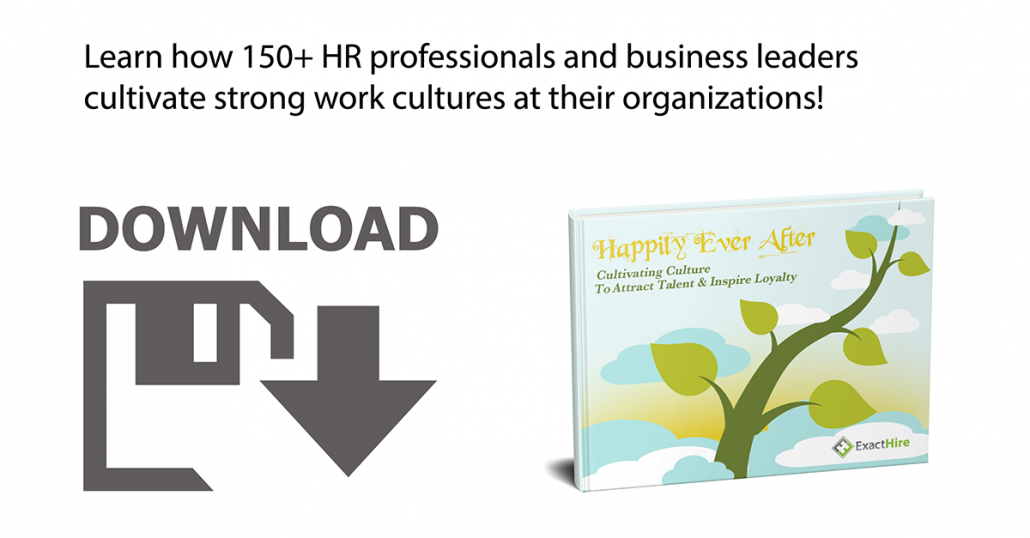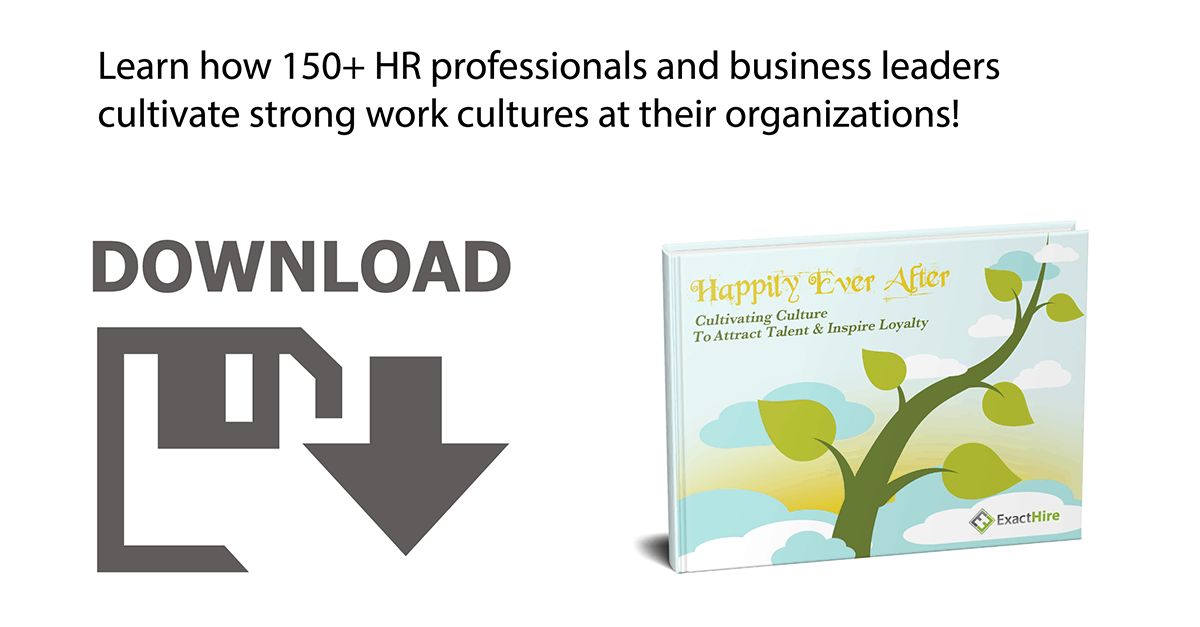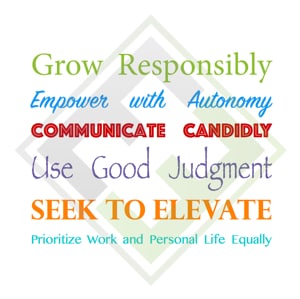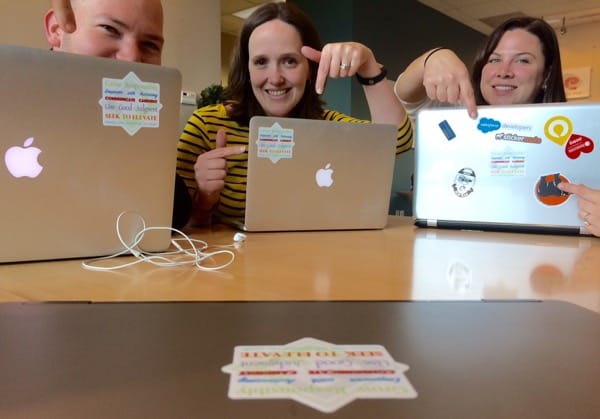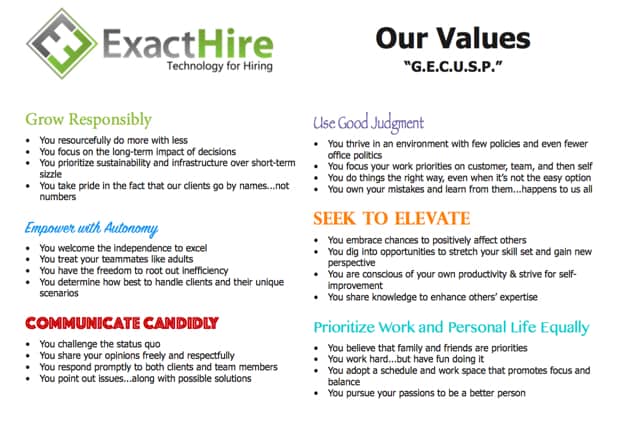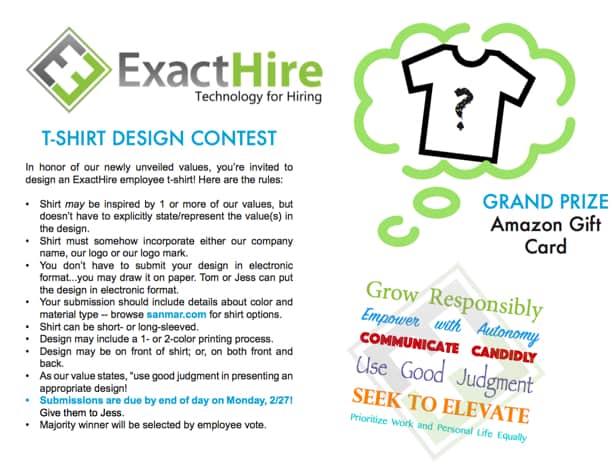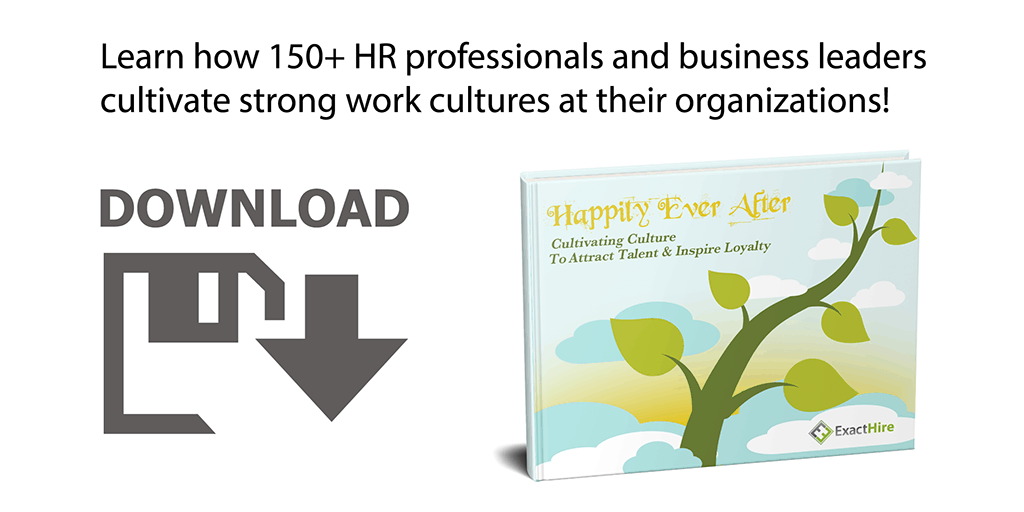4 Liberating Truths the KonMari Method Taught Me About Life and Work
Let me assure you that I’m not the kind of person that is going to end up on the TV show Hoarders. I’m not afraid to clean and I generally put stuff away when I’m done with it. So, when my sister told me about recently reading The Life-Changing Magic of Tidying Up by Marie Kondo, I told her “that sounds interesting, I’ll check it out on Scribd” but I didn’t think it would radically change my current outlook.
However, as I work from home today (an amazing part of ExactHire culture and values by the way), I’m still on my “KonMari Method” high after continuing my quest to declutter my closet over my lunch break. The KonMari Method is Marie Kondo’s self-named technique for tidying up one’s possessions and home. I listened to her first book on my morning commute and during my workouts last week, and now I’m reading her follow-up illustrated guide, Spark Joy.
And, while I didn’t think I was a clutter bug initially, I now can come to terms with the fact that I am a sentimentalist and fervent upcycler. I haven’t met an old, patterned wool sweater I don’t want to eventually make into matching mittens and a hat for my children. The key is “eventually.” I’m a perpetual Pinterest pinner that never has time to create.
It’s not my fault. You see, it runs in my family. Growing up on a farm, we had tons of storage space for “things we might need someday” in the barn, and my mom and sister–being accomplished crafters and seamstresses on the side–saved leftover fabric in mass quantities to use in future quilts. In fact, earlier this week my dad emailed that he was bringing me a box of my old 4-H and sports ribbons. Oh good.
I told him I was decluttering, but I think my recent Facebook posts inspired him to get rid of things, as well, as he admitted that was why the box was coming my way. “But Dad, I don’t have three storage barns.” Argh. So while I’m an ardent supporter of my goal to KonMari my life, I’m enjoying the journey and all its challenges.
A welcome boost / kick in the pants
With the dreary winter behind us, and the trees finally budding out, this couldn’t have happened at a better time in my life. It’s given me a spring in my step; however, it’s been much more than just spring cleaning. What makes the KonMari Method unique, is the fact that you approach your endeavor to discard items by category…rather than location. In fact, you’re supposed to do so in the following order: clothing, books, papers, miscellaneous and sentimental items.
Starting with something as innocuous as clothing is supposed to help you hone your decision-making process so that by the time you get to the tough sentimental item category, you really know what you yearn to keep (and treasure).
I highly recommend you read this book for yourself, but in the short-term, I’ll share four truths that were mini-epiphanies for me along the way–and how they have impacted my home and work life so far.
1 – Do only what “sparks joy”
As the title of Kondo’s sequel suggests, the foundation of her method is to only keep items that spark joy when you touch them. While I’m still only on the clothing category (yikes…have I really had those shirts for two decades?!?), it has been a great exercise in forcing myself to reconnect with my own style and purge the items that I’ve held onto because
- someone gave them to me,
- they bring back certain memories, or
- I’ll fit into them again in a few months (in my dreams perhaps).
This clothing catharsis has naturally re-calibrated my decision-making process in other areas of my life. It’s easier to vet which activities really bring joy and prioritize the tasks I make the most time for in my job.
For example: don’t continue to produce work that you feel compelled to do just because you’ve always done it that way. This is especially true if it doesn’t actively help to bring about joy, change or action with others. I recently pared down the marketing metrics that our department shares with the company considerably…and it certainly made others joyful!
2 – Decluttering your home space declutters your head space
While filling up garbage bags and taking them to Goodwill certainly declutters my house, KonMari wasn’t lying when she said this ritual does so much to purge doubts, stresses and concerns, too.
It works like this: when you have too much stuff, you forget what you have…and more importantly, what you really, really like. Too many options are debilitating. This is how I feel about the Cheesecake Factory menu. I’d much rather go to a restaurant with a menu that only has a couple of pages of customer favorites. But who am I kidding? I still won’t turn down the chance for cheesecake sometimes, too.
Now that my closet is color-coded, as well as organized by season and length of item (yes!), I do feel lighter and energized when I enter the space. My energy has been translated into a renewed passion for sharing ideas and things I really love. You won’t be surprised to learn that I’ve told no fewer than ten friends to read this book already.
Challenge: what can you get rid of in your office today? How about those dusty presentation handouts from last year’s state SHRM conference? You know the ones. Or, maybe you save them digitally? In either case, have you actually referenced the handout since experiencing the presentation? The presentation may have brought you joy, but it’s okay to accept that the purpose ended there and rid yourself of the desk (or desktop) clutter!
3 – Self-talk isn’t so silly
Upon reading the book, one of the ideas that struck me as a little kooky was Kondo’s suggestion to talk to your house when you get home to announce your arrival, and to tell your departing inanimate possessions “thank you” for the joy they previously brought you. The idea is to be emphatically gracious to your belongings so that you treat them with more care while they are serving a purpose for you, and also as a way of being at peace when you bid them a final farewell.
So, as I was toiling over the future fate of belongings from my collegiate glory days, I decided it was okay to say goodbye to my ratty 1998 (gasp!) Alpha Chi Omega bid day t-shirt once and for all. When in my right mind did I think I’d have time to make a t-shirt quilt? Let alone if I did, what makes me think I would actually display that quilt anywhere in my home? Truth. Shhh…I had a whole bag of old Alpha Chi t-shirts to eliminate. Extreme truth. I only whispered “good-bye” as I peered out my bedroom window blinds to see the gaping mouth of our trash bin after the garbage had already been collected.
Alas, it’s not the first time you’ve heard that positive self-affirmations do a body good. I mean, Stuart Smalley, right? But in all seriousness, believing in yourself, setting your sights on a new responsibility at work and staying focused are easier feats when you’re not overwhelmed by clutter when you walk into your home or office.
4 – Tidying does promote wellness
As human resource professionals, many of us are empowered to make strides in improving our workplace wellness initiatives. Perhaps a group office clean-out party is just the ticket to energize your efforts! In fact, Marie Kondo claims that many of her clients lose weight and improve in health as a consequence of decluttering their life.
It makes sense. With a renewed effort to keep and do only things that you love, it’s probably easier to stay focused to achieve the physique and well-being you truly seek. I know my appetite has been easier to manage since I’ve started decluttering. After all, I’m often focused on my next tidying steps rather than distracted by the idea that a cookie would make a good snack! And, I’ve been more than happy to hit the gym in our building on my lunch hour…if only to listen to more business-related and self-improvement books while I work out.
Purging unnecessary and unloved possessions really does help lighten your load both physically and mentally. It brings to light which commitments you have been approaching half-heartedly and which relationships are worth preserving or repairing (both in your personal life and at work).
Maybe it’s
- the fresh air (once the dust has been cleared in the now breathable closet),
- the peaceful serenity of letting go of once beloved items the right way (sayonara oversized cotton tees), or
- spring cleaning enthusiasm!
Or, maybe it’s just reconnecting with yourself and identifying what you are truly passionate about having, doing and pursuing in life. If anything in this blog struck a chord, what are you waiting for? Go check out Marie Kondo’s book!


